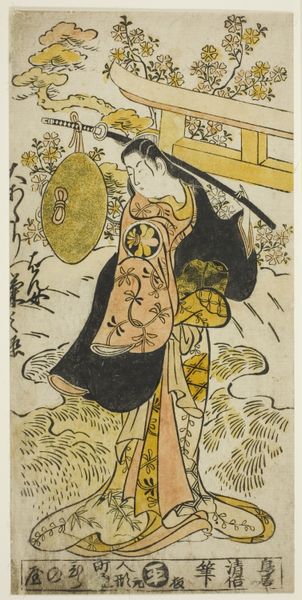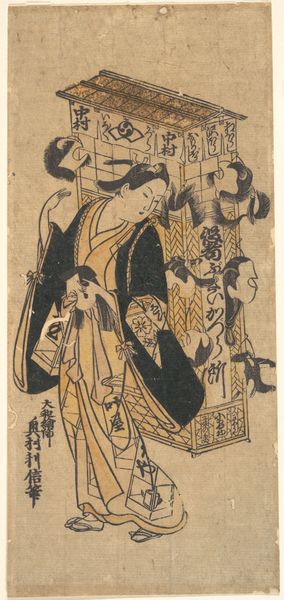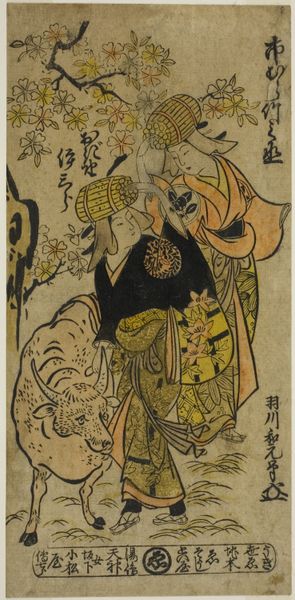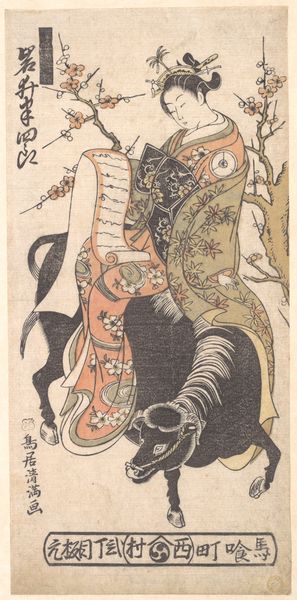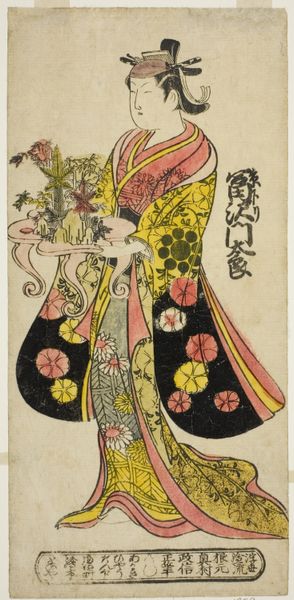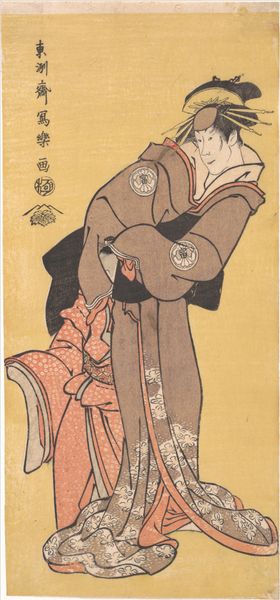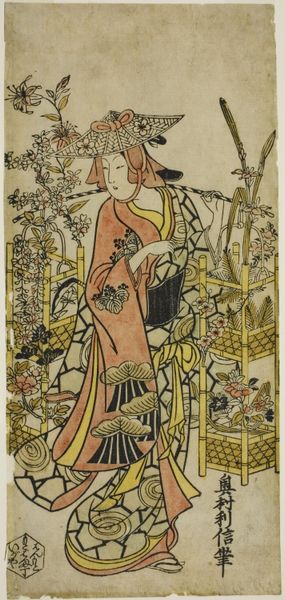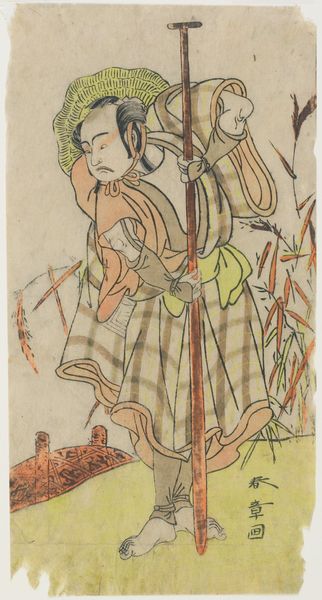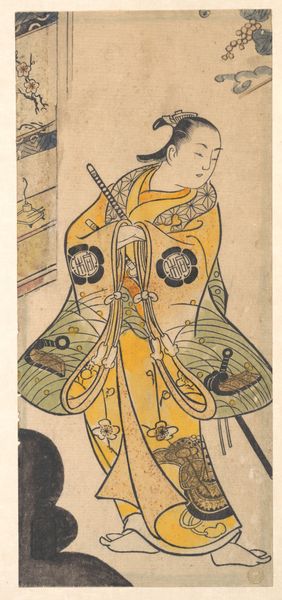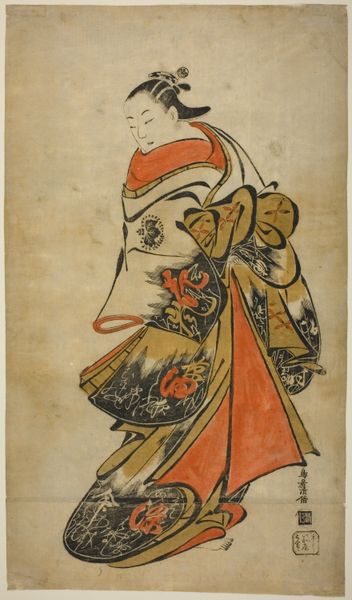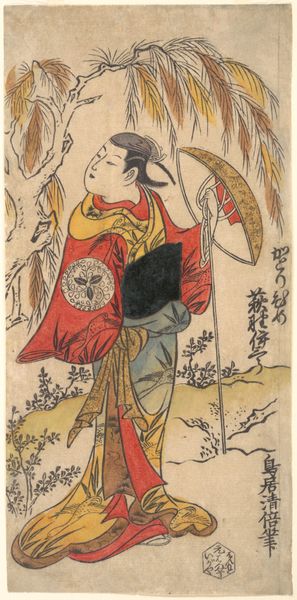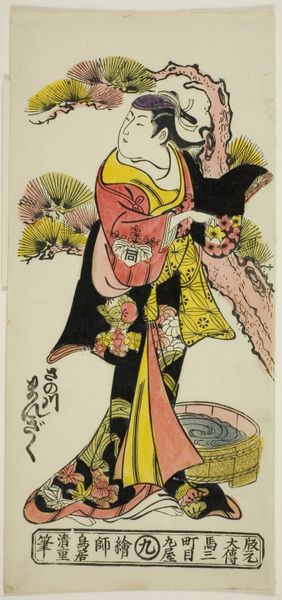
print, ink, woodblock-print
#
portrait
#
ink painting
# print
#
asian-art
#
landscape
#
flower
#
ukiyo-e
#
japan
#
figuration
#
ink
#
woodblock-print
#
genre-painting
Dimensions: H. 11 1/4 in. (28.6 cm); W. 5 7/8 in. (14.9 cm)
Copyright: Public Domain
Curator: Here we have "A Young Lady in a Garden," a woodblock print by Nishimura Shigenaga, created sometime between 1697 and 1756. Editor: I'm immediately struck by the sense of enclosure. The way the garden structures and blossoming tree frame the figure—it almost feels like she's captured, or observing from a hidden space. Curator: That's a wonderful observation. The motif of a woman in a garden has deep roots in East Asian art. Often, it symbolizes beauty, but also ideas about cultivation, and a kind of protected existence. Editor: Absolutely, and given that Shigenaga worked in the Ukiyo-e tradition, it is hard not to also think of how this representation exoticizes women. What narrative of beauty standards is presented here through the serene posture of the figure? Curator: In Ukiyo-e, or "pictures of the floating world," female figures became increasingly idealized symbols. Consider the careful positioning of the hands, and downward cast gaze, along with the detailed robes—are these not communicating a certain kind of refinement? And aren't we drawn into a cultural space? The plum blossoms have traditionally symbolized virtue, and renewal too. Editor: I hear that and understand the intention. But thinking from a social justice lens, aren't the women in Ukiyo-e a site to challenge stereotypes and biases? Do we see any evidence in the depiction of class or socioeconomic background? Curator: This is the fascinating duality of images. The garden here could also signify a retreat, a temporary refuge from a world undergoing significant change in the mid-Edo period, from where, ideally, values are retained. Editor: Yes, like this idealized vision that women retreat to their gardens instead of actively engaging in labor rights movements and discourse within a patriarchal society. So is she really alone, or is it that our modern vantage point excludes the societal structure implicit to her person? Curator: That perspective absolutely shifts our understanding! I come away feeling freshly challenged by the depth of art's reflection of culture, and culture's ongoing reflection back at the art. Editor: Yes, the way artworks reflect both intended meaning and societal realities gives them enduring power. The layered questions will continue to keep the narrative around them alive.
Comments
No comments
Be the first to comment and join the conversation on the ultimate creative platform.
